Reflexivity occupies a rather curious position in film studies and criticism. In his Making Meaning: Inference and Rhetoric in the Interpretation of Cinema (1989), David Bordwell skeptically observes that while reflexiveness is the most widespread and “powerful” interpretative framework “shared by all schools of criticism,”[1] basic “theoretical questions” surrounding the concept’s application to cinema have gone largely unanalyzed (111). Over thirty years later, this remains the case.
While still surprisingly under-theorized in fundamental terms, scholars and critics continue to appeal to reflexivity in relation to a variety of moving-image topics and developments. These include digital filmmaking and viewing in a “post-cinema” environment marked by increasing medium hybridity, convergence, and self-consciousness; established, and more recently emerging, reflexive genres and sub-genres in both narrative and non-narrative cinema, e.g., the Hollywood about Hollywood film; the found-footage horror film; the contemporary essay film; and “complex cinema” and the “puzzle film” (Buckland 2009; Kiss and Willemsen 2014), characterized by cognitive games between filmmakers and audiences that have been posited as a “new reflexivity” in mainstream cinema (Lavender-Smith 2016). Reflexivity is also routinely evoked in contemporary discussions of postmodern and post-classical Hollywood cinema (e.g., Konrath 2010; Elsaesser 2012); together with “metacinema,” metafiction, and metalepsis, as part of a growing interest in transmedial narrative processes increasingly found across cinema, literature, comics and graphic novels, computer games, and other forms. This is all in addition to on-going analysis of the reflexive features of individual films and bodies of work, and particular devices associated with reflexivity, such as direct address (Brown 2012) and the use of mirror reflections in films (Hanich 2017).
Indicative of recent trends in screen studies, as well as stylistic, technological and cultural evolutions in filmmaking and viewing, this substantial 21st century interest in the topic provides an even greater motivation to take up Bordwell’s implicit challenge concerning reflexivity. Namely, for theorists to offer a more systematic account of its general forms and processes and their relation to other aspects of cinematic meaning and style that square with the empirical, e.g., film historical, facts. Reflexive forms and processes, that is, which notably occur across time periods, filmmaking modes, and styles; and an account of them that manages to avoid the pitfalls of over-generalization at one extreme, and unwarranted reductionism, at the other. Together, it must be added, with the ideological zeal and excessive prescriptivism that have tended to mark the history of reflection on the subject (see, for instance, Rodowick 1995; Metz 2015).
A necessary first step in this ongoing project is to attempt to establish, arguably for the first time, a suitable definition of cinematic reflexivity in general. In addition to securing a firmer conceptual foundation for analyzing its various forms and functions—“formal” and “political,” modernist and postmodernist, and so on—that have been suggested over the decades, and identifying new ones, this will aid in differentiating it from other features of films. And, in the process, delimit reflexivity as a coherent object of study. With these considerations in mind, my relatively more modest aim here is two-fold. First, to offer such a general definition of cinematic reflexivity, which, as rooted in its basic referential and cognitive function, challenges some prevalent notions concerning it. And second, to draw attention to certain under-emphasized affective and emotional facets of reflexiveness. That is, the capacity of reflexive films to engage, through both image and sound, the spectator’s senses, emotions, and imagination, alongside her reflective and “critical” thought. As I will show, while they are distinct, the basic cognitive and semiotic workings of cinematic reflexivity and its affective-emotional ones are in no sense incompatible.
Apparatus, Medium Awareness and a Cognitive Semiotic Approach
The only wide-ranging, original English-language study of cinematic reflexivity in a transnational context is Robert Stam’s Reflexivity in Film and Literature (1985; 1992). Stam’s admirable survey of the topic in the wider context of the history of reflexive and “self-conscious” literature and theatre is now considerably out-of-date with respect to major stylistic and technological developments in the moving image. Moreover, by its own admission, and in spite of its relevant insights in both respects, it does not provide either a general theory of cinematic reflexivity, or a more formal definition of the phenomenon. Perhaps the closest to each of these is found in Christian Metz’s late work on cinematic enunciation (published in 1991 in France and translated in 2015). For Metz, belonging to the broader category of a film’s “impersonal enunciation,” reflexivity is a cinematic work’s “metadiscursive” self-reflection through established devices, such as the direct address of the camera/viewer, the presence of “secondary screens” within the image, and the film-within-the-film (Metz 10). What all have in common is their foregrounding the direct, extra-narrative communication from film to spectator that they enact—the aforementioned “enunciation”—including through “doubling” and “redoubling” basic perceptual features of the work and the conditions governing its experience (Metz, 53; 81). As is true of Don Fredericksen’s earlier schematization of filmic reflexivity based upon Roman Jacobson’s posited six semantic functions of language (as discussed in Yacavone 2021), Metz’s account is limited by its structural-linguistic, film-as-text model and method of analysis.[2] Nevertheless, it represents a clear highwater mark to date in attempting to anchor the analysis of familiar, yet notably disparate, reflexive techniques and effects found throughout film history within a systematic theoretical framework. In addition to its positive claims, Metz’s detailed and perceptive critique of certain traditional views of reflexivity is especially useful for our present purposes.
Fredericksen maintains that “no single motivation can be given for reflexiveness” in cinema. While this is certainly true, and cannot be stressed enough, it does not follow, as he suspects, that “perhaps no general definition of reflexiveness … is possible which is not banal or reductive” (319)—even if empirical and conceptual shortcomings of existing understandings highlight the attendant difficulties. To succinctly address the most substantial of these, most discussions of cinematic reflexivity emphasize (a) the active display, or “exposure” of the “apparatus,” i.e. the technical machinery of filmmaking and viewing and the culture praxis in which it is embedded; and (b) a film’s prompting significant awareness of the medium on the viewer’s part. While the latter need not entail the former, writers who stress the display of the apparatus—when “a film lets us see or listen to the very thing that produces it” (Metz 64) —regard heightened awareness of the medium, and of film form and style, as its natural consequence. Indeed, deliberately avoiding showing the apparatus and encouraging the awareness at issue through this and other means, is widely considered a hallmark of non-reflexive cinema—in which, to reverse Marshall McLuhan’s famous dictum, the fictional story, and not the medium, is “the (intended) message.” This approach to narrative filmmaking is variously described as “realist,” “transparent,” and “illusionistic,” and prominently includes what Noël Burch calls the “institutional mode of representation” (IMR). The latter is codified in classical Hollywood-style filmmaking, focused on what Richard Allen terms conventional cinema’s “projective illusion” of a given, self-sufficient “world,” in direct contrast with a “medium awareness” instead directed at this world’s filmic construction and presentation (110).
Thus conceived, reflexivity, as the proverbial reminder to the audience that they are watching a film, is a pronounced deviation from conventional cinematic illusionism and its oft-noted reality effect. Additionally, for many theorists, reflexive devices both challenge the mentally passive spectatorship they regard this traditionally dominant mode of filmmaking as engendering, and provide the primary means, within films, of drawing attention to its implicit ideology. As is well known, the reflexive exposure of the apparatus and the concomitant creation of a more critically aware attitude towards films—as a practice-based corollary of the theorist’s deconstructive analysis of the semiotic codes of classical cinema—was a bedrock of the “counter-cinema” advocated in French “apparatus theory” and Anglo-American “Screen” theory in the 1970s and 80s.[3] Yet as Metz and others have shown, whether they are motivated by socio-political critique, or by providing a more neutral description of film experience as following from properties of the medium and its uses, such conceptions of the exposure of the apparatus and of medium awareness are inherently limited in scope and applicability.
With respect to the much-discussed apparatus, as significant and impactful as it may be, reflexivity is clearly not confined to a film’s either showing its own apparatus (narrowly defined) or that of a film represented within it (as a film-within-the-film), for example. Reflexive reference in cinema may alternatively work through innumerable represented situations: direct address of the viewer; visual and narrative mise-en-abyme structures; interpolation of non-diegetic material; voice-over narration; intertitles; allusions to other films, television productions, and art works; casting; the choice and use of locations; and music; among other features of films. Second, and getting to the heart of its suggested function, as Metz, Pascale Bonitzer, and other writers, have argued, there is no good reason to think that a film’s simply showing the—or a—film camera, projector, movie theatre, the director or crew, etc., is sufficient to prompt (more) genuine critical thought about what it presents and how it does so (Metz 64). In addition to various factors of context and reception, this depends on what—if anything—a film “says” about the apparatus and its functions, i.e., in the form of an “analysis enveloped in the fold of the fiction” or an extra-diegetic commentary (Metz 64).[4] Such reflection is considerably more than this exposure alone and it frequently involves other reflexive devices working in aggregate. Thus, rather than its end, or main substance, let alone defining feature, foregrounding the apparatus is only a (possible) beginning of a substantive reflexive communication from the film and its maker(s) to audiences.
Finally, many apparatus-centered views of reflexivity tacitly assume that a film can show the apparatus to viewers directly, and it is in this very directness that its power and honesty (e.g., in critical-political terms) is seen to reside (Metz 19; 64-66). However, as Metz, building on Edward Brannigan’s observations, convincingly argues, literally speaking, the most any film may do is represent, or otherwise refer to, the apparatus. Traditionally, at least, this includes the screen, as its most prominent component in theatrical viewing, and the camera that has filmed what the spectator sees at any specific moment. Moreover, it must do so through the apparatus, since the only tools at a film’s disposal for showing it are the same images and sounds that are also the product of it (Metz 19). Just as, we might say, a mirror, if facing another, only reflects an image of itselfin a (secondary) mirror image that it not only contains but itself creates, as yet another image. When we watch a celluloid projection of Bergman’s Persona (1966), and in its forty-fourth minute, the film strip burns and disintegrates at a crucial dramatic moment (Figure 1), it is of course not the actual celluloid film, of the print we are watching, passing through the projector that is affected, but, rather, an image of afilm strip, as standing for Persona’s, and every celluloid film work’s, uncannily insubstantial material basis.
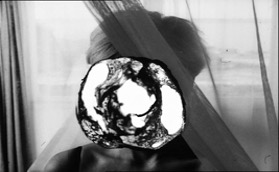
Figure 1. Imaging the apparatus: medium, mediation and materiality in Persona.
The presentation of any aspect of the filmmaking machinery is a cinematically (and stylistically) mediated version, or interpretation, of it, in the original sense of the Latin “mediatus,” as placed in the middle of two things, from which the word “media” also derives. In this case, between the actual apparatus and the viewer. This suffices to show that the display of the apparatus, like reflexivity, more generally, is “textually enclosed” (Metz 19).
Although intuitively plausible, to yoke reflexivity to the creation of medium awareness is also to invite numerous, otherwise avoidable problems. The concept itself is complex, and potentially ambiguous, insofar as it may be understood as filmmakers drawing attention to (a) the nature of the film work as an artifact; (b) its perceptual illusion of ordinary reality (as an illusion); (c) the fictionality of its represented world and characters; or all of these.
While undoubtedly a basic motivation for its manifestation in some films, awareness of what we may for convenience call the film-as-work is already present to various degrees in cinematic experience whether or not it is prompted and encouraged by reflexive forms and devices. Leading to the obvious, partly justified, response, “Why need a work remind us of what we already know?” Although relative to the psychology of individual spectators, there is typically an alternation—or dialectic—of perceptual and diegetic immersion and attention to presentational and other medium-contributed aspects of any fiction film. Furthermore, if reflexivity is simply equated with medium awareness conceived as the polar opposite of “projective illusion” (or what some writers refer to as “aesthetic illusion”), or film-as-world, as per Allen’s distinction and similar ones, this strictly dichotomous approach quickly breaks down in the attempt to apply it to classical Hollywood cinema. In which, as Bordwell reminds us, there is a long tradition of the use of reflexive devices. These presumably also prompt or increase film-as-work awareness at certain moments, while nonetheless fostering the world illusion in question, in other moments, or overall (Bordwell, The Way 9-11). At a minimum, then, such awareness and perceptual/diegetic illusion, or its primary effect, are not mutually exclusive with respect to a film as a whole. And, as I will argue shortly, there are good reasons to see them potentially co-existing even in relation to the same sequence, image or sounds. Even putting all of this aside, medium awareness pertains to what reflexivity as a form of cognitive self-awareness in cinematic experience may do, and which some films encourage more than others (and, in some cases, perhaps demand). As such, it belongs to the category of the effects of reflexive practices, and cannot be used to delineate cinematic reflexivity per se, as its cause.
Given these and other difficulties, despite their undoubted relevance to reflexivity, such ideas concerning the apparatus and medium awareness appear to confuse more than they clarify. Yet if they are an insufficient basis for a general definition of cinematic reflexivity, what, if anything, is? Able, that is, to provide something like an Aristotelian “first principle,” allowing both its recognition (for instance in borderline cases) and its further classification and analysis? As basic as it may be, the answer lies in the indisputable referential operation of reflexive features.
At base, cinematic reflexivity is no more or less than the conjunction of a film’s recognized reference to cinema via self-reference, and self-reference via reference to cinema, with all of the circularity this entails (see also Yacavone 2021).[5] “Cinema,” as the universal of which each film is a particular instance, here refers to any generic features of it that a givenfilm may reference: medium properties, filmmaking processes, conditions of viewing, screen history and culture, and so on. In other words, and more simply, reflexivity is a form of combined cinematic reference(i.e., reference to cinema), and self-reference, on the part of films. Whileconjoined through mental association, as any given film is an example of cinema as a whole, one or the other of these poles may be primary or more direct.[6] In order to get a better sense of this variability, but also the associational co-presence of the cinematically referential and self-referential in films, let us look at a few concrete examples.
In Robbe-Grillet’s Trans-Europe Express (1967), the director is periodically seen discussing the story of the unfolding film and its interpretation with passengers on the eponymous train; at the ends of Kiarostami’s A Taste of Cherry (1997) and Jones’s Monty Python and the Holy Grail (1975),the film crew shares the screen with the characters/actors. In the comic pre-credits prologue to Tashlin’s The Girl Can’t Help it (1956), which begins in black and white and in standard aspect ratio, one of its stars (Tom Ewell), playfully introduces viewers to the film’s then novel CinemaScope format and “gorgeous life-like color” (courtesy of the recently invented DeLuxe color process) by tapping on the sides of the frame, which expand in response, and ordering a startling switch to color (Figures 2 and 3).
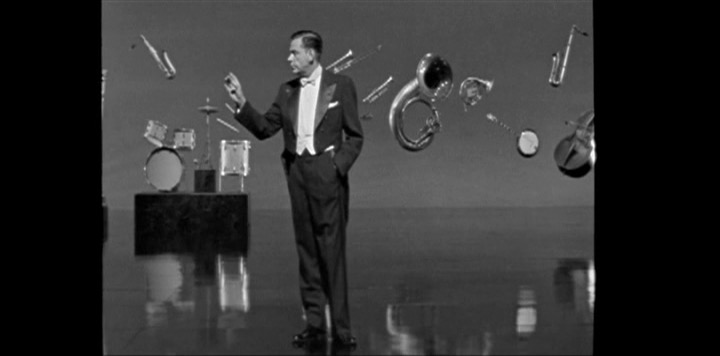
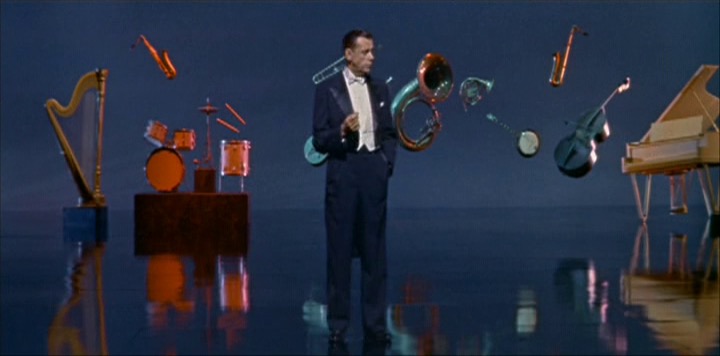
Figures 2 and 3. Conjoined work and medium reference via format alteration in The Girl Can’t Help It.
Taken together these films thereby directly foreground their ownplotting, narration, and reception (Trans-Europe Express); the physical act of their shooting (A Taste of Cherry; The Holy Grail); and their technical format and its perceptual experience (The Girl Can’t Help It). Whereas, cinematic narration and interpretation, more generally (Trans-Europe Express); relations of difference and identity between what the film image records and literally denotes, and what it fictionally (i.e. imaginatively) signifies (A Taste of Cherry; The Holy Grail); and medium and technological properties of cinema and their evolution (The Girl Can’t Help It); are all correspondingly evoked indirectly.
The reverse is true with respect, for instance, to a film’s reference of another film, or its actual incorporation, such as King Hu’s Dragon Inn (1967) embedded within Ming-liang’s Goodbye, Dragon Inn (2003) (Figure 4); the representation of a (fictional) film in the process of being made, i.e. the film-within-the-film, in this sense; and the metaphorical version of what I have elsewhere called “environmental reflexivity” (Yacavone 2021). In the latter, literally non-cinematic spaces connote the spaces and conditions of filmmaking and/or film viewing, for instance the apartment exteriors and their view in Hitchcock’s Rear Window (1954) (Figure 5).
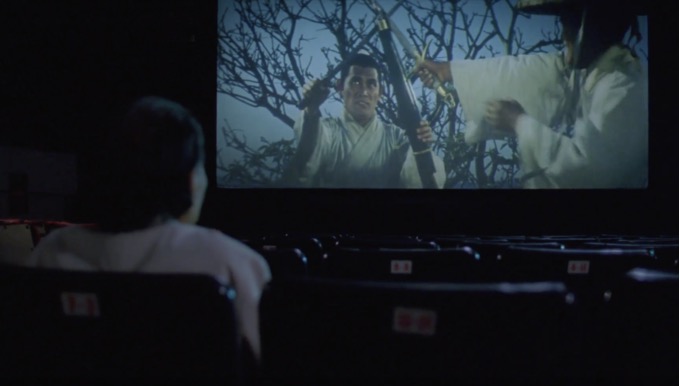
Figure 4. Goodbye, Dragon Inn: the film-within-the-film as indirect self-reference.
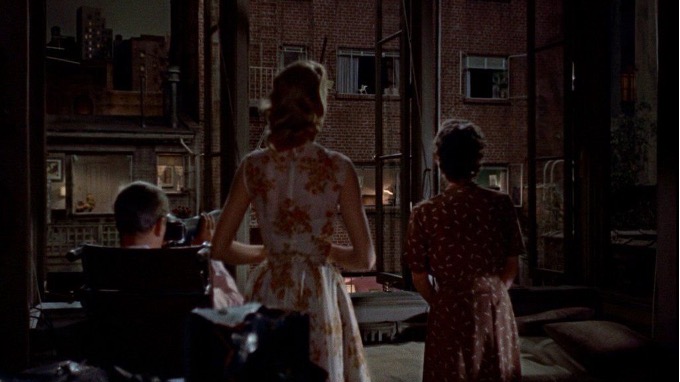
Figure 5. Environmental reflexivity via secondary screens in Rear Window.
In all these instances, the self-referential aspect of the films’ reflexivity is clearly present but implied, in comparison to their more direct reference to cinema generally, and to what (also) exists outside of the works and perceptual confines (i.e. what, beginning with Gilbert Seat-Cohen, theorists have referred to as external “cinematic” factors, as distinct from “filmic” features internal to works). Finally, in other cases, a film’s reflexivity may be focused more or less simultaneously on its own specific form, apparatus, production, experience, etc., and some general aspect of cinema (or of other films). The film strip’s appearance in Persona falls into this third category, which is a characteristic of other globally reflexive works, such as Vertov’s The Man with a Movie Camera (1929), Godard’s Contempt (1963) (see Yacavone 2015), and Carax’s Holy Motors (2012).
Regardless of the specific character of its signifying object or feature, and whether the self-reference it involves is explicit or implicit in relation to its general cinematic reference (or the two are explicit), in cinematic reflexivity the synecdochic—a physical part of something standing for the whole of it, or vice versa—and metonymic—X thing standing for Y, via some relatively direct relation between the two, and their customary association—are crucial. A film stands for cinema, as the larger reality of which it, and any film, is a part. This is a higher-level counterpart of the associational, part-whole relations often operating with respect to specific reflexive devices, as the crux of Metz’s previously mentioned understanding of “reflexive” markers of extra-narrative enunciation defined in contrast with “commentative” features of films that merely comment upon the narrative fiction from outside of it. Since, unlike the latter, in one way or another, a reflexive feature of a film mirrors, or “doubles,” on a meta-level, some particular aspect of its creation and/or experience, e.g., a feature of the medium or apparatus, within (a part of) its audio-visual presentation (Metz 52-53). For instance, the image of a screen or frame within the film image that perceptually duplicates the primary screen on which it is viewed.
As the above indicates, the conjoined reference/self-reference constituting cinematic reflexivity may take many forms and involve formal, representational, narrative, and non-diegetic elements. Whatever its visual or auditory vehicle in a film, and the directional orientation of reflexive reference—either a work pointing inwards to itself, in the first instance, or outwards, to film history, culture, aspects of the medium, and so on—its particular semantic content, in the sense of what a reflexive feature specifically says about the film of which it is a part and about cinema, is as unlimited as the features of either that filmmakers wish to bring to the viewer’s attention. Finally, notice also that on this definition the term “self-reflexivity” is largely redundant, as all reflexivity directly or indirectly involves a degree of self-reference on the part of the work. It may retain some usefulness, however, as a designation of the emphasis, signifying object, and more specific function of a film’s reflexivity, in individual instances.[7]
In sum, this functional definition is precise enoughto allow us, in principle, to more clearly distinguish reflexivity proper from other associated processes, including metalepsis, metafiction, allusion/intertextuality, intermediality, and narrative and stylistic self-consciousness. And, by the same token, it provides a basic criterion for determining ifand when any of these also work in a reflexive fashion. For instance, with respect to metafiction as it is customarily understood, when a film’s depiction of acts of fictional storytelling pertains to both cinema, and to the film in question, in some specific and significant way (which isnot always the case); or, when a film’s allusions to, or intermedial incorporation of, other arts and media, reflects back in some notable fashion on cinema’s artistic and medial nature – which, again, it need not (see Yacavone 2021). (Of course, the presence of such references, their meanings and their significance within a work, are not strictly objective facts about films, but how these are convincingly interpreted. And historical and stylistic context plays a major role here in determining the presence and content of reflexivity. The situation is no different, in this respect, from the ascription of a genre, a style or the marks of authorship to a film.) For all of these reasons, the proposed definition is also broadenough to allow for the full range of reflexive forms and functions that films may manifest.
Reflexivity as Affect, Emotion and Immersion
Returning to reflexivity’s effects on viewers, in addition to being a semiotic, i.e., referential, process, in some films it has a pronounced feeling component. To appreciate the full the spectrum of reflexivity’s emotional and affective dynamics, and related immersive ones, we may make use of the general mapping of film feeling that I have elucidated elsewhere (Yacavone 2015). Wherein, intersecting with other such classifications, it is divided into diegetic (i.e., fiction-based), artefact, and sensory-affective, categories.
With respect to diegetic emotion—equivalent to what Ed S. Tan (2011) and Carl Plantinga (2009) theorize as fiction emotion (“f-emotion”) in cinema—reflexivity may create identification with, and feeling about, a film’s fictional characters, events, and represented world. And against common assumptions, it may increaserather than preclude or diminish emotion-rooted psychological absorption in its story. This may be considered a reflexive amplification and harnessing of the basic double-vision aspect of cinematic perception. By which I mean, our imaginative capacity as spectators to non-exclusively perceive and feel characters and cinematic worlds asthe fictional characters and worlds presented, on one ontological plane, andas actors, and formal, medial, and symbolic constructions. Following philosopher and art theorist Richard Wollheim’s lead, cognitive film theorists have referred to this as “twofoldedness.” [8] It is the cinematic equivalent of seeing a vase of flowers represented in a Van Gogh painting—“seeing-in” a representational image, in Wollheim’s terms—and seeing it as an arrangement of colored marks on a canvass, i.e., as a pictorial construction—“seeing-as”—more or less simultaneously (Wollheim 137-51). This simultaneity of seeing-in and seeing-as in films casts substantial doubt on the binary film-as-illusion versus film-as-artefact account of cinematic experience I referred to earlier.
One conduit for this experience is an actor’s direct visual and/or auditory address of the viewer, breaking the so-called fourth wall, typically through looking at the camera. A cinematic inheritance from the stage and Vaudeville, this is commonplace in silent and early sound comedies, setting a precedent for its widespread use in subsequent comedic films and musicals. Although significantly less common in dramas, it is a notable feature of some avant-garde leaning art cinema. As V.F. Perkins observes, in Stan Laurel and Oliver Hardy’s films, Hardy’s frequent looks to the camera in the midst of some comic mishap are a direct entreaty for viewer sympathy (Figure 6), which, as in other instances, actively creates an “intimacy” with the character and the fictional drama, rather than psychic and emotional “detachment” (Perkins 40 n.6). The same is true, in a dramatic as well as comic register, of Anna Karina’s and Jean-Paul Belmondo’s, and their characters, Marianne’s and Pierrot’s, periodic address of the spectator in Godard’s Pierrot le fou (1965).
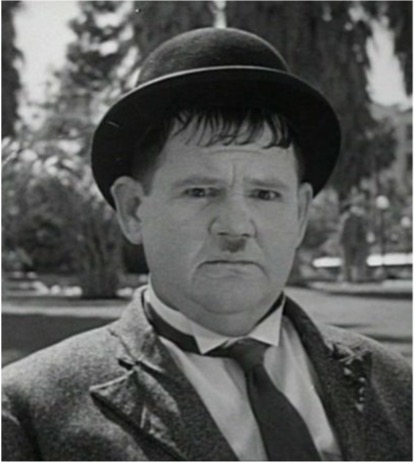
Figure 6. Oliver Hardy and direct address as fiction emotion.
Without contradiction, such address generated emotion centered on fictional characters and situations holds despite the fact that this address is also a temporary interruption (however brief) of the flow of the diegesis, through which the reality of the film’s making enters the finished work and its experience. An interruption, which, on a meta-level, and through the aegis of the character-actor duality, draws the audience’s attention to their dialogical relationship with the film as made for, and directed at, them.
In such cases, the figurative address of the spectator on the part of the cinematic work—as a whole and as a created object—is temporarily localized and subjectivized, as we might say, in the actors’ faces and gazes, through which the film appears to look at us (Figure 7). Partly owing to the expressive power of the face (to which I will shortly return), this results in an added psychological frisson in comparison to other extra-narrative devices, as well as representation lacking such address. Combining speaking-to viewers with looking-at them, the same experiential dynamic applies to the actor’s/character’s verbal address of the audience (Metz 38-37), as in the aforementioned opening of The Girl Can’t Help It.

Figure 7. Localized address: the film looks back in Pierrot le fou.
Throughout film history, from Hollywood and Bollywood musicals to new wave, and more contemporary, art films; from horror movies to superhero blockbusters; reflexive forms and devices create, or perhaps more commonly amplify, emotional engagement with characters and represented situations. This is by no means confined to visual and verbal address. In Avengers: Endgame (2019), concluding the enormously popular Marvel Avengers film cycle in both elegiac and highly self-aware fashion, a reflexivity-induced diegetic emotion combines with what may be termed “fandom” emotion and immersion. The superhero characters travel back in time, revisiting sections of their past lives in the hope of undoing an apocalyptic event. As presented, however, this is simultaneously a re-visitation on the part of both the filmmakers and spectators of familiar sequences from the previous Avengers films (and others of the Marvel franchise), as originally depicting the events in question and here re-created. The characters and presumably many spectators are also powerfully aligned through this device; as both feel nostalgia, among other emotions,for the superimposed actual cinematic, and virtual (i.e. fictional), past, the film re-presents, now cast in a new, sentimental light. The nostalgia that is a major extra-narrative and emotional component of all cinematic sequels, remakes, and franchises is thus “diegeticized,” brought into the narrative itself, heightening its impact.
Such examples and first-hand experiences of films, along with Perkins’s, Plantinga’s (2009; 2018), Torben Grodal’s (1999), and other theorists’ perceptive observations in support of reflexivity bringing viewers psychologically closer to represented characters and events, and encouraging imaginative and emotional identification and story world immersion—in art films as well as popular cinema—are sufficient to overturn traditional blanket equations of reflexive devices with distantiation, Brechtian alienation, and related notions. Indeed, and to push the point further, no matter how radical its specific means and ends may be in stylistic and critical-political terms, anyfilm’s periodically interrupting, foregrounding, and commenting upon, its fictional world is best conceived not in the traditional binary, negative (or subtractive) fashion. By which I mean, as taking something away from a narrative film’s experience—in the form of a (fictional) reality dispelled, a veil lifted, an illusion broken—that would otherwise be preserved.Rather, it is the significant addition of another dimension of meaning and expression, including in the form of one or more meta-levels within a work and its experience. It is in this sense that Metz writes that although
it was long believed, in a militant spirt of deconstructive avant-gardism and stout semi-ideological courage, that “markers” or open configurations of [reflexive] enunciation had the unavoidable effect, not to say the deserving definition, of breaching the ramparts of belief, of the imaginary this has traditionally obscured the fact that its “main function” is “not revelatory but constructive.” (30, my italics)
Apart from Metz’s account of reflexive enunciation, and the experiential twofoldedness of presentation and representation, film-as-work and film-as-world, this view is further bolstered by certain basic properties of fiction, including cinematic fiction, and our engagement with it, which narratologists and philosophers have stressed. Not least among these is the general ontological and imaginative autonomy and stability of fictional worlds, even in the face of reflexive foregrounding. Groucho Marx’s and Woody Allen’s characters in Duck Soup (1933) and Annie Hall (1977) (Figure 8) remain on our mental screen even when Marx and Allen temporarily “step out of them,” as the saying goes. And so, in these moments, do the fictional worlds in which these characters exist.

Figure 8. Twofoldedness and the persistence of the fictional (Annie Hall).
As Perkins rightly maintains, a film’s characters and represented world are primarily imaginary, rather than perceptual, constructs. Inhabiting that strangely autonomous realm of fictional entities, where no amount of reflexivity and artefactual awareness may harm them, as it were, once created and experienced they exist, and stubbornly persist, in the stories films tell, in the minds of viewers, and in the collective consciousness.[9] Accordingly, and speaking directly to Metz’s point above, neither belief, nor its proverbial “suspension” vis-à-vis fiction, construed as underpinning cinematic illusionism, are as relevant to the workings of reflexivity, or its theorization, as is frequently assumed.[10]
Artefact, Affect and Attraction
Returning to the main topic at hand, apart from contributing to emotional engagement with fictional characters and worlds in some films, reflexivity clearly pertains to emotion directed more exclusively at a cinematic work as a work. Termed “artefact emotion” (or “a-emotion”) as distinct from fiction (diegetic) emotion, by Tan and Plantinga, this concerns feeling abouta film’s intentions, achievements, context, style, and so on, all of which may be bound-up with reflexivity. A basic example (adapted from Plantinga) is viewers being moved to pleasure and appreciation by a film’s reflexiveness when it seems inventive and illuminating—or to annoyance and anger when it is regarded as distracting, gratuitous or cliched.
A more interesting type of relevant artefact emotion, in the sense that it lends itself to further analysis in general and in specific cases, is what we may call cinephilic (together with the aforementioned fandom)feeling. This is emotion, identification, and immersion a film engenders by being about cinema, on the part of the film lover, who, like the work, is part of a living, constantly renewed, cinematic tradition and culture. Clearly, reflexivity may create, or strengthen, a feeling of communal belongingto this tradition, and a sense of shared purpose in the viewer, together with a more general “in-group pleasure” (Wolf 68). The film within the film, allusions to other films, quotations of recognizable styles, pastiche and parody—including of cinematic reflexivityitself, in the case of Mel Brook’s High Anxiety (1977), which reflexively spoofs the reflexivity of Antonioni’s Blow-up (1966)—all of these devices simultaneously generate emotion towards the works that deploy them and to cinema in general, so that they become affectively synonymous (as the emotional corollary of the previously discussed referential association of the two). Films such as Truffaut’s Day for Night (1973), Tornatore’s Cinema Paradiso (1988), and Lynch’s Mulholland Drive (2001) generate excitement, fascination, nostalgia, gratitude, and other feelings and emotions about the experience and history of cinema.[11] The emotional impact of Lilian Gish’s still in-character address of viewers at the conclusion of Laughton’s Night of the Hunter (1955) and Gloria Swanson’s longed-for close-up, as fading star Norma Desmond, in the final moments of Wilder’s Sunset Boulevard (1950) (Figure 9) partly owes to these actresses’ past as silent film icons, at least for those viewers familiar with it (see also Perkins 36-38).
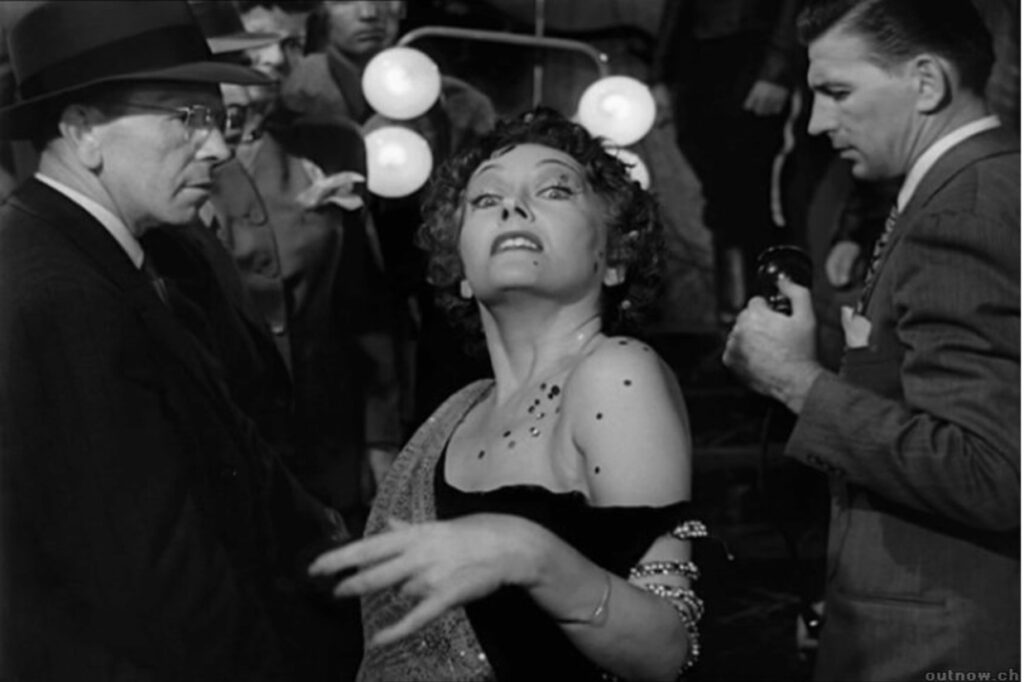
Figure 9. SunsetBoulevard: “Cinephilic” emotion as reflexive loop.
Such feeling for and about them, and the silent Golden Age of cinema they represent, is both distinct from, yet circularly feeds (back) into, the experience of their characters and of the films’ fictional drama. Moreover, and similar to genre markers, the viewer’s knowledge and appreciation of other films and cinema history not only predisposes him/her to be on mental alert for any aspects of a film that evokes cinema, but to be highly receptive, affectively and emotionally, to it.
The resultant cinephilic participation with a film is a far cry from either emotionally detached connoisseurship, or mere intertextual reference spotting, as common as the latter may be (and today encouraged by a myriad of online resources for cataloging such references). Sometimes quite playful in nature, and frequently genre-focused, the combined reflective and emotional participation I have in mind is aided and embedded by filmmakers as stylistically disparate as Jacques Demy, Robert Altman, Wim Wenders, the Coen Brothers, and Guy Maddin, who, like other directors, build figurative spaces for this attitude, and this relationship with a film and with cinema, intothe very structure of their works. Similar to the “emotional-prefocusing” of characters and situations through various narrative, visual, and auditory strategies that Noël Carroll suggests filmmakers utilize in order to evoke a desired emotional response in viewers, this is tantamount to an extra-narrative, reflexive “prefocusing” of viewer emotion (224-226).
Both fictional (diegesis-focused) emotion, and a good deal of cinephilic emotion, hinge on the conceptual content of reflexivity, however minimal it may be. In other words, communicated ideas about characters and situations, the films containing them, and cinema, as prompting certain feelings. Yet, while seldom far from reflective thought in the moment-by-moment apprehension of a film, and frequently still involving the representational and profilmic (i.e., non-fictional) content of images, there is also a more sensation and perception-based, or sensory-affective, feeling dimension of reflexivity in some narrative works, as well as experimental films and documentaries. Sometimes this more direct, reflexive-affective channel from film to spectator has one foot remaining in the fictional diegesis. For instance, the global affective atmosphere of some “post-cinematic” works, including Kelly’s Southland Tales (2006), and Assayas’s Demonlover (2002) and Boarding Gate (2007), to which Steven Shaviro attributes a combined “immanent” reflexivity and intermediality focused on the experience of new media technology (67, 126).[12]
But apart from what film images represent, and the fictional story they help tell, it also encompasses the affective impact of what has been categorized as formal reflexivity and stylistic self-consciousness—both of which are traditionally understood as a significant departure from more effacing, if never wholly “invisible,” film modes and styles (Nichols 1991; Stam 1992). A source of perceptual shocks and surprises, films’ defamiliarizing rupture of standard conventions of editing, cinematography, staging, and the use of sound and music, are major contributors to their affect, tone, and mood. Amos Vogel recognizes this in including such reflexivity, self-consciousness, and “formal deconstruction” in his catalog of types of “subversive cinema,” alongside radical political, sexually and religiously transgressive, and abstract, filmmaking practices (31-108). In a playful or confrontational, but never affect-less way, these processes upset established habits of cinematic perception through foregrounding graphic, kinesthetic, rhythmic, and material features of the image and soundtrack. In accordance with the original Russian Formalist notion of “de-familiarization,” such features and the feeling they generate may also stimulate (subsequent) reflective ideas and recognitions (and re-cognitions) on the viewer’s part concerning filmmaking and experience, whether or not this is specifically intended by creators. To this picture we can add the display of the apparatus, as previously discussed, the more immediate perceptual and affective impact of which, as in Persona, may be considerable.
In these guises, reflexivity is an “attraction” in Sergei Eisenstein’s sense of the term. That is, an “aggressive” and “affecting” element designed to “subject the spectator to a sensual or psychological impact” in the form of “emotional shocks” (Eisenstein 78). Here it is worth recalling that the earliest instances of reflexivity in cinema, introducing reflexive representational and formal tropes and devices that reoccur throughout film history (Figure 10), appeared in the context of what Tom Gunning’s famously characterizes as the early, and quite widespread, “cinema of attractions.” In other words, a cinema founded on “exhibitionistic confrontation” that is “always willing to rupture a self-enclosed fictional world for a chance to elicit the attention of the spectator” (382, 384).
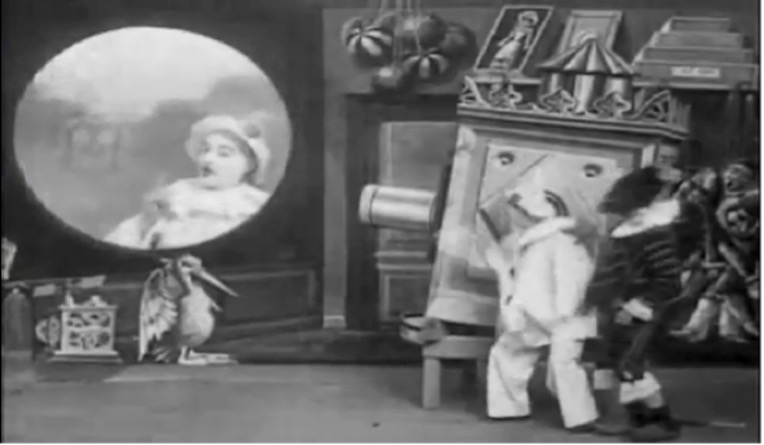
Figure 10. An early film-within-the-film as ‘attraction’ in The Magic Lantern.
Thus, it is predominantly in a subsequent, post-cinema of attractions era, dominated by the diegesis-focused IMR, that formal reflexivity and self-consciousness, like the display of the apparatus, has the added sense and feel of difference and transgression of the norm.
Whether this is any longer the case, given stylistic and technological developments since the 1990s that have led some theorists to posit a circular return to a “new cinema of attraction” in mainstream filmmaking, is an open question (see Shaviro 118-24). What is clear, however, is that a prominent strand of 21st century reflexivity in both narrative and documentary contexts is characterized by an unusual abundance, and especially complex and work-defining overlapping, of reflexive themes, forms, and devices within films. Rather than simply recycled in the ironic, tongue-in-cheek fashion associated with postmodernism, this dense reflexivity seems designed (or “pre-focused”) to perceptually and affectively shock, confront, confuse, and generally disorient viewers in a more profound way. Together with the Southland Tales and Demonlover, and their affective overload in this respect as analyzed by Shaviro, Haneke’s Hidden (2005), Lynch’s Inland Empire (2006), Carax’s Holy Motors, and Oppenheimer’s The Act of Killing (2012), and the low-budget films of French director Quentin Dupieux, are other potent examples of this trend. Still possessing a referential and reflective component by definition, this contemporary, affect-centered “hyper-reflexivity” (to coin a term), and its theoretical implications, requires more detailed explication than space here permits. But it is not difficult to see how it may be a dialectical reaction to the otherwise lessening impact, and aforementioned sense of deviation, of some conventional reflexive devices (frames-within-frames and screens-within-screens; mixing of media; metalepsis; narrative self-consciousness; direct address, etc.) which are now commonplace rather than exceptional. Not only are they widespread in mainstream narrative cinema and television, but in music videos, computer games, user-created online videos, and, in more basic forms, computer and smartphone interfaces and software applications.
Let us turn finally, and briefly, to sound and music, as the most purely emotive elements of cinema. When used to counterpoint, and comment upon, visual representation, as opposed to conventionally complimenting it, the thereby “emancipated” soundtrack may amount, as in the films of Godard, Marguerite Duras, and Jean-Marie Straub and Danièle Huillet, to a contrastive critique of its traditional roles in fostering cinematic illusionism, realism, and diegetic emotion. Nevertheless, in these and other cerebral, self- and cinema-critical works, as in all cases, sound and music remains highly affective. And auditory reflexivity, and what it communicates to spectators, often works through the immediate power of their feeling. Consider Coppola’s The Conversation’s (1974) and De Palma’s Blow Out’s (1981) auditory reworkings of Blow-up’s exploration of ordinary and cinematic vision, in which shocking amplified sound recordings replace the latter’s enlarged photographic images; and Peter Strickland’s Berberian Sound Studio (2012), centered on the making of the soundtrack for an Italian “Giallo” horror film. The blood-curdling screams in Strickland’s film are no less impactful and terrifying for being diegetically identified with the voices of actresses in a sound studio who are only pretending(it appears) to be violently attacked (Figure 11). Yet coupled with the expressionistic manner in which the women are framed and lit, they may be more affecting precisely because they lack a “real” cause within the fiction, which would serve to normalize the sound according to standard dramatic and generic conventions and expectations. (Indeed, whether as per the film’s intentions and dream-like ambiguity, or our tendency as viewers to look for a real cause of such strong and seemingly genuine emotion—or a combination of the two—we suspect there may be an actual fear, within the storyworld, behind such extreme vocal and bodily expressions.) Hence, while narratively justified, the screams seem to pierce the film’s diegesis itself.[13]
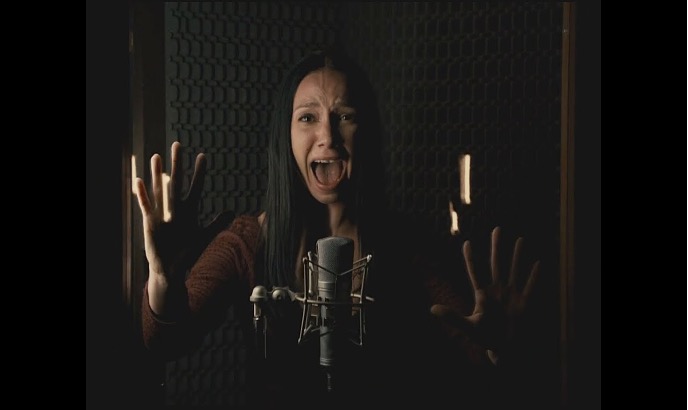
Figure 11. Berberian Sound Studio: the scream as affective, profilmic reflexivity.
If the natural affective power of sound, and of the human voice, is reflexively focused in some films, as both a part of the fictional world and attentionally standing it out from it for particular emphasis at privileged moments, so, too, is the expressive force of the human face (Persona; Faces,1968) and body (Beau Travail, 1999; Under the Skin, 2013). When a film foregrounds the face, body, and voice as a profilmic reality captured by the camera or sound recorder—i.e., as simultaneously the particular face, body and voice of the actor, and/or a generalized human one—the inherent expressive affect not only fuses with the narrative fiction; but, through what Metz terms a “seepage of affect” (32), it also transcends it, confronting the viewer more directly. Whether strictly speaking diegetic or non-diegetic, music, including through its extra-work associations (with other films, for instance), may also occupy this intermediary psychological space—and likewise connect the fictional world of the film and the real world of its making, emphatically bringing the latter into the experiential fold of the former. Of course, beyond any specific reflexivity, and also metalepsis (as a narrative device entailing back-and-forth movement amongst such ontological levels), this in-betweenness and interpenetration of the real and the fictional is built into the very genre of the film musical. A genre which, traditionally, is one-part fictional narrative and world, and one-part recorded performance and spectacle, with the lines between the two frequently blurring.
Implicit at a number of points in this brief tour of the emotional and affective landscape of cinematic reflexivity as a fertile area for further exploration, the different forms of feeling here identified may be co-present both spatially and temporarily in a film’s experience—as is the case of film emotion and affect, more generally. Not least, given that their object and cause may be the same reflexively-functioning image or sound(s) in a film. And like the relatively more cognitive and reflective aspects of reflexivity, they also depend in whole or part on viewers’ attitudes, experience, and knowledge, along with the wider cinematic and cultural historical context surrounding a film’s encounter.
In sum, reflexivity, as ultimately a relation between film and spectator, occupies a figurative location between the cinematic work and the extra-work realities to which it refers. Operating at the intersection of moving-image convention and innovation, meaning and style, empirical fact and narrative fiction, it is a significant part of the cognitive function and value of many films, as well as a major channel for affective and artistic expression. Theorizing reflexivity in a more comprehensive and less doctrinaire fashion involves critically revisiting influential semiotic, narratological, and allied views of the subject. But it also entails looking to relatively more contemporary film theory paradigms, e.g., cognitive, phenomenological, affect-based, inter- and transmedial, which may significantly contribute to a better understanding of its experiential, stylistic, and interpretative dynamics. Indeed, as the examples from both films and scholarship provided here shows, reflexivity involves many different sorts of features and experiences of films, and their contexts, which cannot all be accommodated within a single theoretical paradigm or approach. Instead, it requires marshaling a variety of film and media theoretical and philosophical perspectives to address its various forms, functions and sense modalities (sound and vision).
To conclude where we began, Bordwell is right to consistently criticize sometimes lazy and otherwise problematic recourse to reflexivity as a catch-all, “black box” of film interpretation, whose early sanctioning by the “institution of criticism” as valid, has often substituted for its more robust critical analysis (Making Meaning 111). Yet when better understood, including in some of the ways I have here suggested, it is not only a useful but a necessary analytic and interpretive concept. Not least, given its status as a substantial “motivating” factor behind what is present on screen (to borrow Bordwell’s favored terminology). Indeed, while illuminating its most familiar, discussed, and widely occurring features and uses, systematically rethinking reflexivity along cognitive and affective lines also shows that it pertains to a larger range of meanings, effects, forms, and intended aims, than is widely recognized.
Daniel Yacavone
Works Cited
Allen, Richard. Projecting Illusion: Film Spectatorship and the Impression of Reality. Cambridge UP, 1995.
Bordwell, David. Making Meaning: Inference and Rhetoric in the Interpretation of Cinema. Harvard UP, 1989.
—. The Way Hollywood Tells it: Story and Style in Modern Movies. University of California Press, 2006.
Buckland, Warren. The Cogntive Semiotics of Film. Cambridge University Press, 2000.
Buckland, Warren ed. Puzzle Films: Complex Storytelling in Contemporary Cinema. Wiley-Blackwell, 2009.
Burch, Noël. To the Distant Observer: Form and Meaning in Japanese Cinema. University of California Press, 1979.
Carroll, Noël. “Film, Emotion, and Genre.” Philosophy of Film and Motion Pictures: An Anthology. Oxford UP, 2006, pp. 217-234.
Carter, Christopher. Metafilm: Materialist Rhetoric and Reflexive Cinema. Ohio State UP,2018.
Cohan, Steven. Hollywood by Hollywood. The Backstudio Picture and the Mystique of Making Movies. Oxford UP, 2018.
Corrigan, Timothy. The Essay Film: From Montaigne, After Marker Oxford UP, 2011.
Deleuze, Gilles. Cinema 2: The Time Image, translated by Hugh Tomlinson and Robert Galeta. University of Minnesota Press, 1989.
Eisenstein, S.M. “Montage of Attractions,” translated by Daniel Gerould. The Drama Review, vol. 18, 1974, pp.77-85.
Elsaesser, Thomas. The Persistence of Hollywood: From Cinephile Moments to Blockbuster Memories. Routledge, 2012.
Fingerhut, Joerg. “Twofoldness in Moving Images.” Projections, vol. 14, no. 3, 2020, pp. 1-20.
Fredericksen, Don. “Modes of Reflexive Film.” Quarterly Review of Film Studies, vol. 4, 1979, pp. 299-320.
Genette, Gérard. Métalepse : de la figure à la fiction. Seuil, 2014.
Genette, Gérard. Narrative Discourse: An Essay in Method. Cornell UP, 1993.
Grodal, Torben Moving Pictures: A New Theory of Film Genres, Feelings, and Cognition. Oxford University Press, 1999.
Gunning, Tom. “The Cinema of Attraction[s]: Early Film, Its Spectator and the Avant-Garde.” The Cinema of Attractions Reloaded, edited by Wanda Strauven. Amsterdam UP, 2006.
Kiss, Miklós and Steven Willemsen eds. Impossible Puzzle Films: A Cognitive Approach to Contemporary Complex Cinema.Edinburgh UP, 2016.
Konrath, Lisa. Metafilm: Forms and Functions of Self-Reflexivity in Postmodern Film. VDM Verlag Dr. Müller, 2010.
Kroon, Fred and Alberto Voltolini. “Fictional Entities.” In The Stanford Encyclopaedia of Philosophy,Winter 2018 Edition. https://plato.stanford.edu/archives/win2018/entries/fictional-entities. See on 6/7/2021.
Lavender-Smith, Jordan. “The New Reflexivity: Puzzle Films, Found Footage, and Cinematic Narration in the Digital Age,” Ph.D. thesis, Graduate Center, City University of New York, 2016
Limoges, Jean-Marc. “The Gradable Effects of Self-Reflexivity on Aesthetic Illusion in Cinema.” Metareference Across Media, edited by Werner Wolf. Rodopi, 2009, pp. 391-408.
Melia, Matthew. “Reading The Scream in Berberian Sound Studio and the films of Peter Strickland,” Frames Cinema Journal, Issue 11, May 2017. http://framescinemajournal.com/article/reading-the-scream-in-berberian-sound-studio-and-the-films-of-peter-strickland. Seen on 6/7/2021.
Metz, Christian. Impersonal Enunciation, or The Place of Film. Translated by Cormac Deane. Columbia UP, 2015.
Nannicelli, Ted. “Seeing and Hearing Screen Characters: Stars, Twofoldness, and the Imagination.” In Screening Characters: Theories of Character in Film, Television, and Interactive Media, edited by Johannes Riis and Aaron Taylor. Routledge, 2019, pp. 19-36.
Nichols, Bill. Representing Reality. Indiana UP, 1991.
Perkins, V.F. “Where is the World? The Horizon of Events in Motion Pictures.” Style and Meaning: Studies in the Detailed Analysis of Film, edited by John Gibbs and Douglas Pye. Manchester UP, 2005.
Plantinga, Carl. Screen Stories: Emotion and the Ethics of Engagement. Oxford UP, 2018.
Plantinga, Carl. Moving Viewers: American Film and the Spectator’s Experience. University of California Press, 2009.
Roche, David. Quentin Tarantino: Poetics and Politics of Cinematic Metafiction. University of Mississippi Press, 2018.
Rodowick, D.N. The Crisis of Political Modernism: Criticism and Ideology in Contemporary Film Criticism. University of California Press, 1995.
Smith, Murray. “On the Twofoldness of Character.” New Literary History, vol. 42, no. 2, 2011, pp. 277-294.
Stam, Robert. Reflexivity in Film and Literature: From Don Quixote to Jean-Luc Godard, reprint edition. Columbia UP, 1992.
Tan, Ed S. Emotion and the Structure of Narrative Film: Film as an Emotion Machine. Routledge 2011.
Vogel, Amos. Film as a Subversive Art (reprint edition). C. T. Editions: 2005.
Walton, Kendall L. Mimesis as Make-believe: On the Foundation of the Representational Arts.Harvard UP, 1993, pp. 197-201.
Wolf, Werner “Metareference across Media: The Concept, its Transmedial Potentials and Problems, Main Forms and Functions.” Metareference Across Media, edited by Werner Wolf. Rodopi, 2009, pp. 1-88.
Wollheim, Richard. Art and its Objects, 2nd edition. Cambridge UP, 2015.
Yacavone, Daniel. “Recursive Reflections: Types, Forms and Modes of Cinematic Reflexivity.” Metacinema, edited by David LaRocca. Oxford UP, 2021, pp. 85-115.
Yacavone, Film Worlds: A Philosophical Aesthetics of Cinema. Columbia UP, 2015.
Films
A Taste of Cherry. Dir. Abbas Kiarostami. 1997.
Annie Hall. Dir. Woody Allen. 1977.
Avengers: Endgame. Dir. Anthony Russo, Joe Russo. 2019.
Beau Travail. Dir. Claire Denis. 1999.
Berberian Sound Studio. Dir. Peter Strickland. 2012.
Blow Out. Dir. Brian De Palma. 1981
Blow-up.Dir. Michelangelo Antonioni. 1966.
Boarding Gate. Dir. Olivier Assayas.2007.
Cinema Paradiso. Dir. Giuseppe Tornatore. 1988.
Contempt. Jean-Luc Godard. 1963.
Day for Night. Dir. François Truffaut. 1973.
Demonlover. Dir. Olivier Assayas. 2002.
Dragon Inn. Dir. King Hu.1967
Duck Soup. Dir. Leo McCarey. 1933.
Faces. Dir. John Cassavetes. 1968.
Goodbye, Dragon Inn. Dir. Tsai Ming-liang. 2003.
Hidden. Dir. Michael Haneke. 2005.
High Anxiety. Dir. Mel Brooks.1977.
Holy Motors. Dir. Leos Carax. 2012.
Inland Empire. Dir. David Lynch.2006.
Monty Python and the Holy Grail. Dir. Terry Jones. 1975.
Mulholland Drive. Dir. David Lynch. 2001.
Night of the Hunter. Dir. Charles Laughton. 1955.
Persona. Dir. Ingmar Bergman. 1966.
Pierrot le fou. Dir. Jean-Luc Godard. 1965.
Rear Window. Dir. Alfred Hitchcock. 1954.
Southland Tales. Dir. Richard Kelly. 2006.
Sunset Boulevard. Dir. Billy Wilder. 1950.
The Act of Killing. Dir. Joshua Oppenheimer. 2012.
The Conversation. Dir. Francis Ford Coppola. 1974.
The Girl Can’t Help it. Dir. Frank Tashlin. 1956.
The Man with a Movie Camera. Dir. Dziga Vertov. 1929.
Trans-Europe Express. Dir. Alain Robbe-Grillet. 1967.
Under the Skin. Dir. Jonathan Glazer. 2013.
[1] These include the auteur-based, semiotic, psychoanalytic, Marxist, and feminist approaches prevalent at the time of Bordwell’s writing and which he discusses in this context.
[2] For a balanced assessment of the strengths and weaknesses of Metz’s theory, including in relation to prior and subsequent enunciation-based accounts of cinema, see Warren Buckland’s The Cogntive Semiotics of Film (52-76).
[3] The latter refers to the writings in Screen journal, and other publications, of Burch, Peter Wollen, Colin MacCabe and Stephen Heath, among other theorists, whose ideas, like those of French apparatus theory, were informed by structuralist semiotics, Althusser’s and Brecht’s “alienation” theories and practices, and the Russian formalist conception of estrangement.
[4] As Metz argues, it is not difficult to find instances of an empty, merely “narcissistic” exposure of the apparatus in films, wherein its display lacks any such additional content and message (70).
[5] While this definition of reflexivity hinges on the circularity and recursion at the heart of the phenomenon, the definition itself is not circular (e.g., in the way that defining reflexivity as simply that which causes medium awareness, and medium awareness as that which is caused by reflexivity, would be). I will be further expanding upon this definition and its implications in a future monograph.
[6] This dynamic of combined reference and self-reference makes cinematic reflexivity akin to the symbolic process of “exemplification,” which philosopher Nelson Goodman distinguishes from the basic “denotational” function of words and other symbols, and argues is a central feature of art. See, e.g., Goodman, Reconceptions in Philosophy and other Arts and Sciences and Yacavone 2015.
[7] For another, partly overlapping account of cinematic “reflexivity” and “self-reflexivity,” see Jean-Marc Limoges, “The Gradable Effects of Self-Reflexivity on Aesthetic Illusion in Cinema.”
[8] On two foldedness in cinema as pertaining to fictional characters and more generally, see Murray Smith 2011, Nannicelli 2019, and Fingerhut 2020.
[9] This view of fictional entities and their worlds accords with “artifactualist” and “creationist” positions in the philosophy of fiction. See Kroon and Voltolini 2018.
[10] As part of his influential account of engagement with fictions as a self-aware game of “make-believe,” Kendall Walton’s trenchant criticisms of appeals to the notion of suspension of disbelief are especially salient here. See Walton197-201.
[11] Metz writes that films like Day for Night entail a “sentimental alchemy that induces us to love cinema when we love the film, because the film is speaking of cinema in order to demystify it and to adore it all the more” (65).
[12] Shaviro contrasts this narratively immanent reflexivity, working through the representation of the “postcinematic mediasphere” of digital screens, networks, video surveillance, etc., with the “meta-levels” that characterize “modernist reflexivity” (Shaviro 67, 126).
[13] For more on these dynamics in the film, see Melia 2017.
